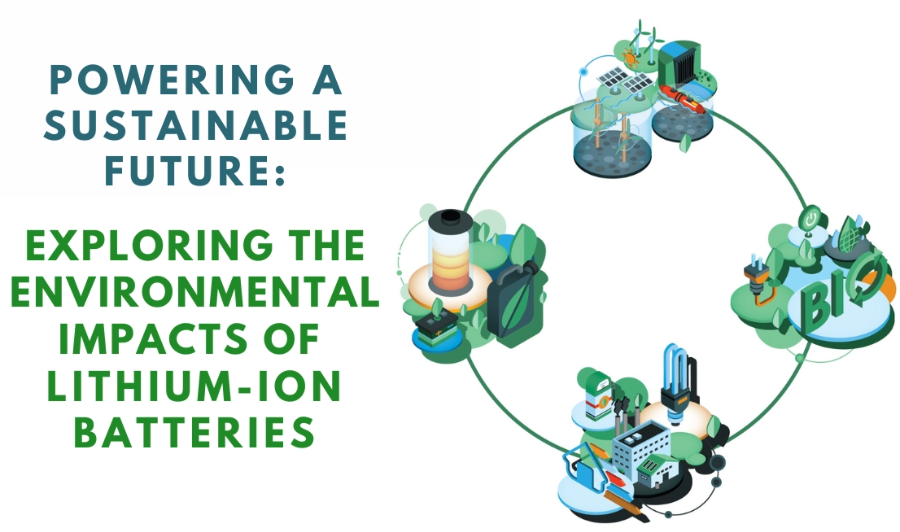Environmentally Friendly Electrolytes in Batteries
The push for greener energy storage solutions has never been stronger. As the world leans into a future powered by renewable sources, the importance of sustainable and cost-effective battery storage is paramount. One of the critical components of battery technology is the electrolyte. Traditionally, many battery electrolytes have been formulated using materials that are either harmful to the environment or expensive to produce. However, there has been significant progress in the last few years toward developing electrolytes that are both sustainable and cost-effective. This article delves into the progress and potential future of these environmentally friendly electrolytes.
What is an Electrolyte?
At its core, an electrolyte is a medium that allows the movement of ions from the anode to the cathode, facilitating the flow of electric current through the battery. Traditional batteries, like the widely used lithium-ion ones, employ liquid electrolytes, which can be flammable and potentially hazardous. There’s been a push to find alternatives that are safer and more sustainable.
A Shift to Solid Electrolytes
One of the most promising areas of research in the quest for better electrolytes is the development of solid-state electrolytes. These electrolytes are solid rather than liquid, which reduces the risks of leakage, combustion, and dendrite formation (a common issue in lithium-ion batteries where tiny, needle-like structures can grow and short-circuit the battery). Furthermore, some solid electrolytes are made from abundant and less toxic materials, making them both environmentally friendly and cost-effective.
Bio-Based Electrolytes
Drawing inspiration from nature, scientists have been exploring bio-based electrolytes. These are made from organic materials, often derivatives of naturally occurring substances. For instance, researchers have been examining the potential of cellulose-based electrolytes. Cellulose is abundant, biodegradable, and can be modified to facilitate ion movement. Other possibilities in this domain include the use of ionic liquids derived from amino acids or other biological precursors.
Water-in-Salt Electrolytes
Another innovative approach is the use of “water-in-salt” electrolytes. By saturating a solution with a high concentration of salt, the resultant electrolyte displays enhanced electrochemical stability. This allows for the use of water as a primary solvent, making the electrolyte more eco-friendly and lessening the risks associated with traditional organic solvents.
Recycling and Reuse
While developing new materials is a significant part of the equation, another crucial aspect is the ability to recycle and reuse the components of batteries, including electrolytes. Recent research has shown promise in reclaiming and repurposing electrolytes, thereby reducing waste and further promoting sustainability.
Benefits of Sustainable Electrolytes
- Safety: As discussed, many new electrolyte formulations mitigate the risks associated with traditional battery chemistries. By removing flammable solvents and preventing dendrite formation, the safety profile of batteries can be significantly enhanced.
- Cost: Materials like cellulose, water, and abundant salts are cheap and readily available. By formulating electrolytes from these components, the costs associated with battery production can be reduced.
- Environmental Impact: A move toward green electrolytes means reduced reliance on harmful chemicals and scarce resources. Plus, with the potential to recycle, the environmental footprint of batteries can be further minimized.
- Performance: Interestingly, many of the sustainable electrolytes also offer performance advantages. For instance, solid-state electrolytes can lead to batteries with higher energy densities and longer life cycles.
The Road Ahead
While there is undeniable progress in the field, challenges remain. The scale-up of these innovative electrolytes from lab-scale to commercial production is a complex process. There’s also a need to integrate them with other battery components and ensure compatibility. Additionally, as with all technological advances, rigorous testing and validation are crucial to ensure these new electrolytes meet the standards of safety, performance, and reliability.
In conclusion, the battery industry is poised at the cusp of a revolution, with sustainable, cost-effective, and environmentally friendly electrolytes leading the charge. As research progresses, there’s hope that the batteries of the future will not only be more efficient and safe but also kinder to our planet. The investments made today in this domain will dictate the trajectory of energy storage for decades to come, and there’s every reason to be optimistic.
Conclusion
The future of energy is inseparable from the progress in sustainable, cost-effective, and environmentally friendly electrolytes in batteries. While challenges continue to coexist with innovations, the unrelenting pursuit of green energy solutions promises a future where energy storage is synonymous with environmental conservation. As we strive towards this sustainable future, the collaborative endeavors of scientists, industrialists, policymakers, and environmentalists will be instrumental in harnessing the true potential of eco-friendly electrolytes, fortifying our resolve to protect and preserve our precious environment for the generations to come.
Source
- https://www.anl.gov/article/designing-better-battery-electrolytes#:~:text=An%20electrolyte% 20is%20the%20battery,chemistry%20is%20relatively%20well%2Ddefined.
- https://www.frontiersin.org/articles/10.3389/fchem.2020.00595/full
- https://www.ncbi.nlm.nih.gov/books/NBK541123/#:~:text=Electrolytes%20are%20essential%20for%20basic, calcium%2C%20phosphate%2C%20and%20bicarbonates.
- https://www.bitsathy.ac.in/sustainable-eco-friendly-electrolytes-in-batteries/

